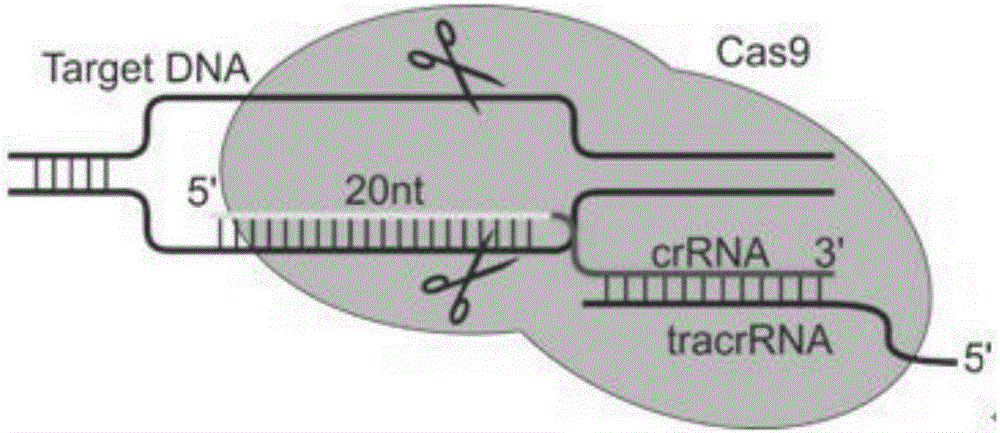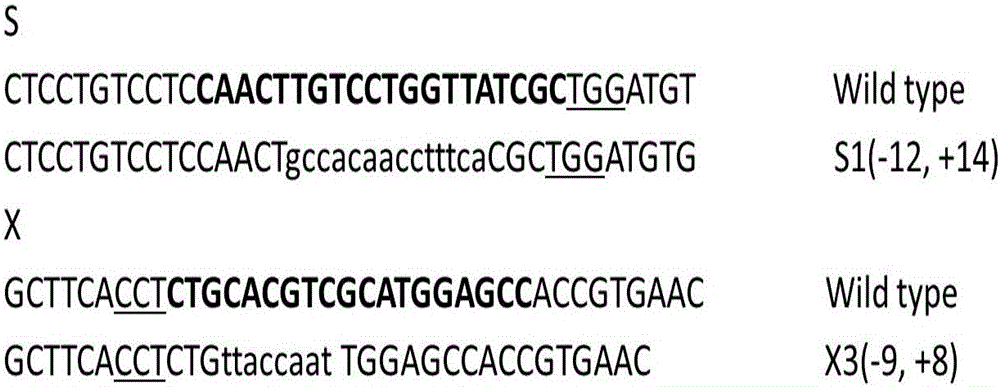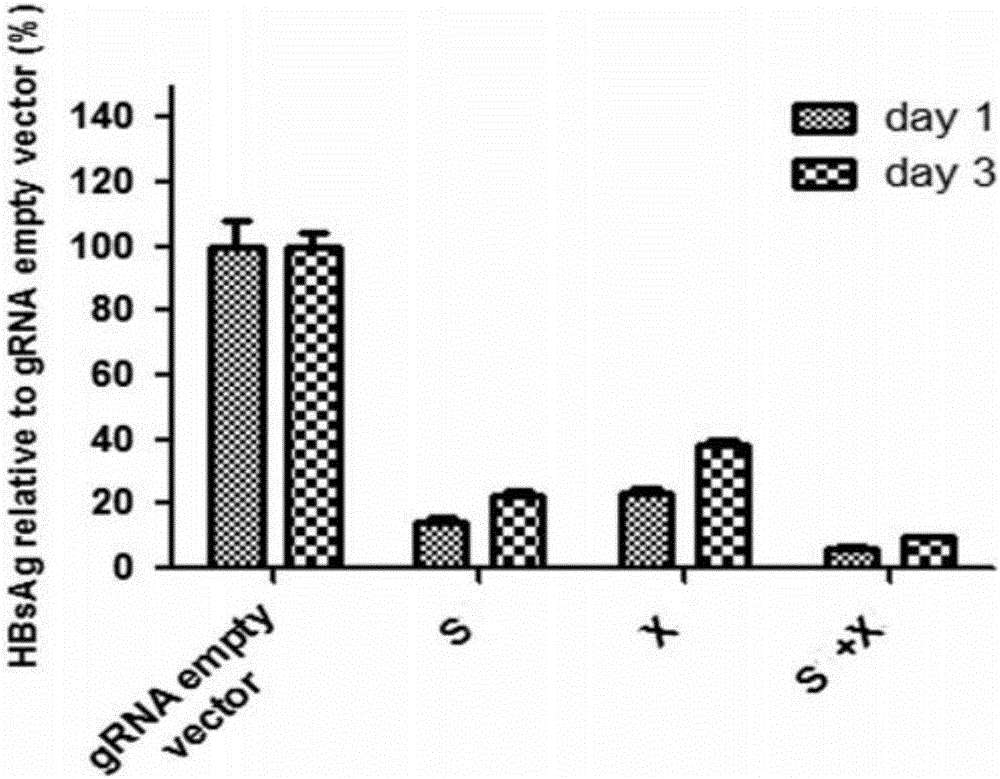Specific sgRNA combined with immunogene to inhibit HBV replication, expression vector thereof, and application of specific sgRNA and expression vector
A gene suppression and expression vector technology, applied in the fields of genetic engineering and biomedicine, can solve the problems of low efficiency, high cost, expensive clinical anti-hepatitis B drugs, etc., and achieve simple method steps, reduced expression, and high knockout efficiency. Effect
- Summary
- Abstract
- Description
- Claims
- Application Information
AI Technical Summary
Problems solved by technology
Method used
Image
Examples
preparation example Construction
[0097] 1. Preparation and culture of DC cells
[0098] (1) Kill the mice by neck breaking, immerse them in 75% alcohol for 5 minutes, separate and take out the two femurs and tibias of the mice under aseptic conditions, remove the muscles and fascia, sterilize in 75% alcohol for 30 seconds, and place them in normal saline spare;
[0099] (2) Use scissors to cut off the two ends of the tibia and femur, expose the bone marrow canal, use a 10mL syringe to absorb normal saline, insert it into both ends of the bone marrow, and flush out the bone marrow into a 50mL centrifuge tube;
[0100] (3) Centrifuge at 1500rpm for 10min, discard the supernatant, add 2mL erythrocyte lysate to precipitate, pipette for about 2min, then add about 40mL normal saline to precipitate and mix well;
[0101] (4) Centrifuge at 1000rpm for 10min, discard the supernatant, add 5mL of fresh 1640 culture medium, count the number of cells under the microscope, and use 1x10 6 mL cell density seeded into 6-wel...
specific Embodiment approach
[0133] Theoretically, after Cas9 cuts off the genome, the cell will repair the genome through non-homologous recombination end-joining. Because this repair mode is prone to mutations, processed genome sequences were tested experimentally as well as deep-sequencing experiments for this mutation. The specific implementation is as follows:
[0134] 1. The cell genome was extracted from the mouse liver, and the kit used was Tiangen Cell Blood Tissue Genome Extraction Kit, and the method was carried out according to the manufacturer's instructions.
[0135] 2. Obtain a fragment that includes the target site.
[0136] PCR reaction system
[0137]
[0138]
[0139] PCR reaction cycle:
[0140] 1) 95°C for 5 minutes;
[0141] 2) 35 cycles
[0142] 95℃30s
[0143] 55℃30s
[0144] 68℃30s
[0145] 3) 10min at 68°C
[0146] 3. Use the company's gel recovery kit to recover the target fragment. The specific method is carried out according to the test method provided by the c...
PUM
 Login to View More
Login to View More Abstract
Description
Claims
Application Information
 Login to View More
Login to View More - R&D
- Intellectual Property
- Life Sciences
- Materials
- Tech Scout
- Unparalleled Data Quality
- Higher Quality Content
- 60% Fewer Hallucinations
Browse by: Latest US Patents, China's latest patents, Technical Efficacy Thesaurus, Application Domain, Technology Topic, Popular Technical Reports.
© 2025 PatSnap. All rights reserved.Legal|Privacy policy|Modern Slavery Act Transparency Statement|Sitemap|About US| Contact US: help@patsnap.com



